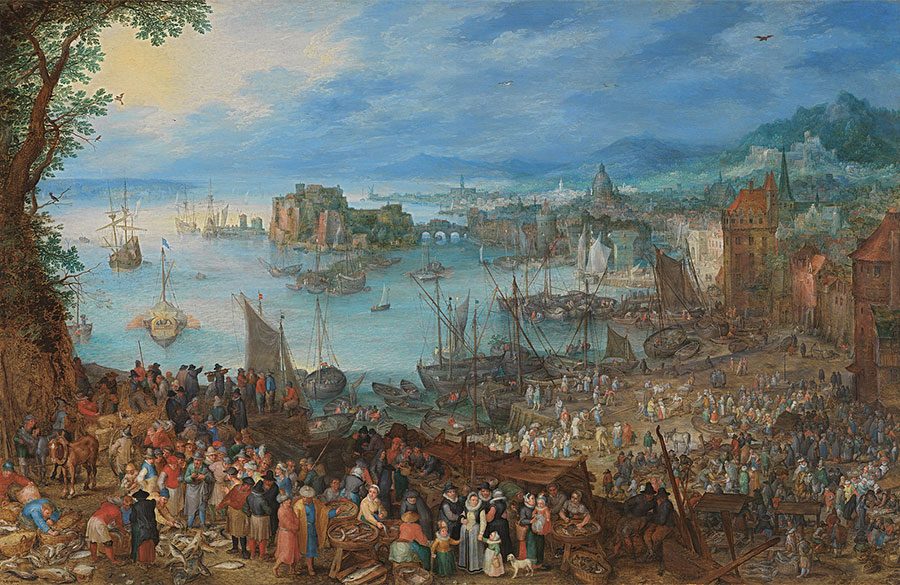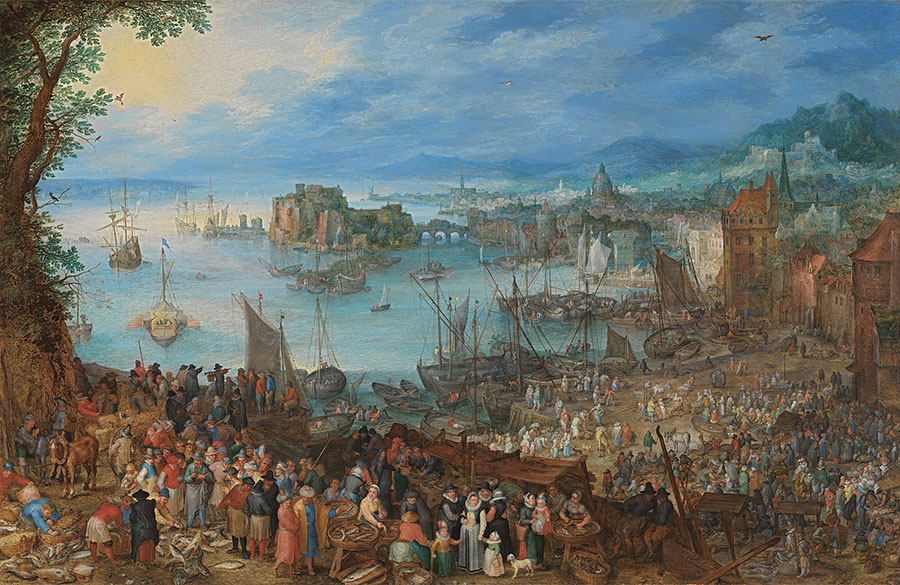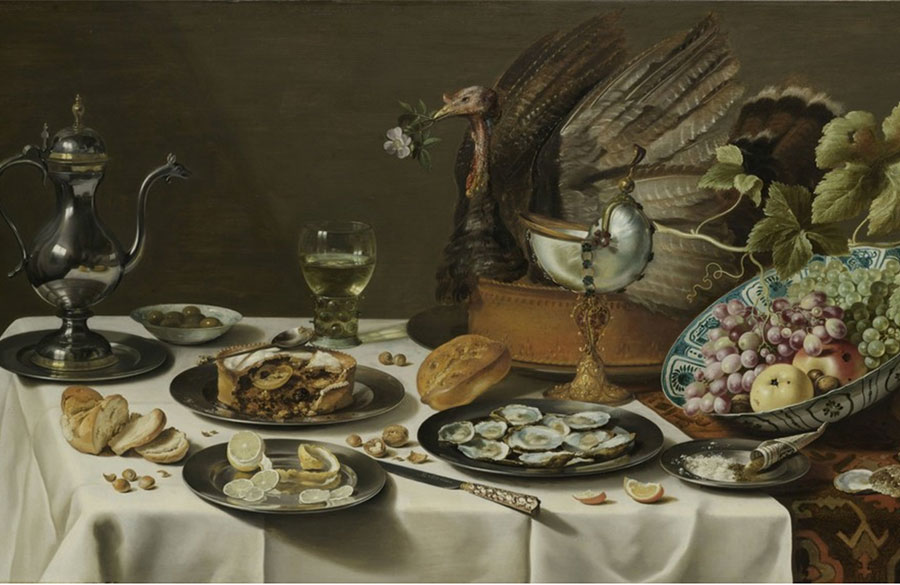Seafood in art history

European art between 1600 and 1700
When we dive into a plate of delicious seafood, we often don’t realise that we’re taking part in a meal that has deep roots in cultural history. Fish have always been a part of our lives, so it’s no surprise that they’re a big theme in art as well. Come with us on a journey to discover fish and seafood in artistic heritage.
The Renaissance in the Netherlands and Flanders (think Holland and Belgium) produced some of Europe’s greatest landscape and still-life painters of the age.

Jan Brueghel the Elder, c. 1603
Alte Pinakothek, Munich (Courtesy of Wikimedia Commons, the free media repository)
Like other Netherlandish masters Bruegel here shows a remarkable level of attention to detail and busyness in his painting, bringing the scene to life for us, as it might have been at the time. In the left foreground prospective buyers inspect the catch, while the man in green takes their orders. Just above them a cart stands ready to take the fish to the city. In the middle ground, fishing boats and other vessels crowd the docks, bringing in the day’s catch. Without modern refrigerated trucks, the fish had to be bought, transported and prepared quickly to avoid spoiling, which made the fishmarket a hive of activity at specific times of day. Today, CTFM works with fisherman to get the catch directly onto refrigerated trucks as quickly as possible. By maintaining the ‘cold chain’, we’re able to supply fresh fish to our restaurants across the country, instead of having it limited to coastal towns as it mostly was in Bruegel’s time.
The ‘still life’ genre was also very popular during this time. Flowers, food or other objects on a table were the focus for most still life art of this period. The sub-genre of market scenes was more ambitious, attempting to depict much larger scenes on larger canvases, as another Netherlandish artist, Frans Snyders has done here.

Frans Snyders, c. first half of the 17th c.
Royal Museum of Fine Arts Antwerp (Courtesy of Wikimedia Commons, the free media repository)
‘Fishmonger’ means ‘a person who sells fish’. Here, in extraordinary detail, Snyders is showing us a fishmonger’s stall. There’s an almost endless number of species from the sea, as well as rivers and lakes. From oysters and crabs to tuna and eels, see how many you can identify. This is not meant to be a strictly accurate representation of what a fishmonger’s stall would have looked like, as they would have handled far fewer species of fish. However, paintings like this were commissioned by wealthy fishermen or trade guilds to celebrate the bounty of the sea, which served as their livelihood.
Below, another Dutch painter, Pieter Claesz, shows us in this still life how oysters were a luxury food even in the 17th century.

Pieter Claesz, c. 1627
Rijksmuseum, Amsterdam (Courtesy of Wikimedia Commons, the free media repository)
We’ve seen the market and the stall, so now it’s time to take look at a wealthy man’s table. Oysters, eaten with lemon as they still are today, draw the eye. They stand alongside fresh grapes (a luxury at the time), an intricately-made mother-of-pearl nautilus shell drinking vessel, as well as expensive silverware. The carefully-posed turkey from which the pie was made is an example of a centerpiece that often adorned the tables of the rich. Towards the back of the table, a glass of white wine can be seen.
Today we are able to serve our customers oysters and champagne (or white wine) at all of our restaurants, at any time, instead of it being a luxury restricted to only wealthy merchants or nobles as in was in Claesz’s day.
What do you think? Familiar or foreign? Delicious or…not-so-delicious? Tell us what you think on Facebook, Twitter, or Instagram with the hashtag #FishInArt to let us know. Plus, if you’ve got a painting in mind you’d like us to see, post it and we’ll take a look!
In the meantime, if you’re in the mood for a retro evening out, join us for a trip back in time with oysters, seasoned with fresh lemon and a glass of perfectly paired wine.

